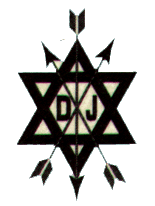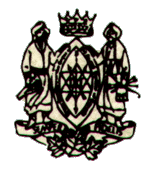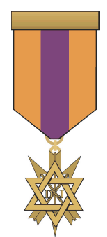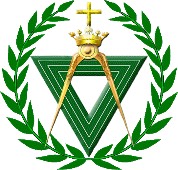


Order of the Secret Monitor
As early as 1778 there was a society in Holland known as the Order of Jonathan and David, which probably furnished the germ for the origin of the American Grade now known as the Secret Monitor. In his “Catalogue,” Kloss gives the title of a book published in 1778 at Amsterdam, which gives the statutes and formula of reception of the early Dutch society. This Dutch society became Masonic, no doubt, as there is mention of it in connection with Freemasonry in that country at a date just later than the above mentioned. On page 162, Vol. V, A.Q.C., there is, in addition to the other Dutch Masonic data, the following statement: “From the foregoing documents it is not possible to determine whence they issued or derived their authority. The names, however, of De La Garde, Bergh, Dalmencourt, De Consalvin, are to be found on old documents and certificates issued by a Chapter named ‘Jesus,’ and another called ‘Jonathan and David,’ of Avignon, France, in 1778.
“The Bro. Bolt who was thus authorized to erect Chapters of the Rosy Cross, was also empowered to constitute Chapters of the United Orders of Jonathan and David, and Jesus Christ, by a document of which the following is a part.
“Les Grand-Maitres plènipotentairees des ordres, fraternels et confèderès de Jonathan et David et Jesus Christ, au nom et sous l’auspice et la tolèrance mysterieuse de Sa Saintetè, Pius Pontife Sourverain! Magistre Suprème at Oecumenique! Serviteurs de Dieu! par la clemence divine …”
The birth of the Masonic Grade of Secret Monitor appears to have occurred in the United States, where it was worked for many years under various titles – “Brotherly Love,” “Jonathan and David,” and finally “Secret Monitor.” Its first appearance seems to have been in 1850, in which there is clear mention of the Grade.
The Grade was one of the many so-called “side degrees” which were worked throughout America during the last half of the nineteenth century. It was usually conferred – by communication – by one Mason upon another, without fee and no record being made of the event. Too, many Lectures conferred the Grade and thus it spread into most of the States.
Sometime near the close of the nineteenth century, Dr. Issachar Zacharie carried the Grade from America over to England. There, a Body was created to administer over the Grade, termed a Supreme Council. The Grade was rearranged into three ceremonies: (1) That of Induction, (2) The Assembly of Princes, and (3) The Installation of a Supreme Ruler.
Early records of the working of the Grade are scarce in this country, due to the fact that it was worked as a “side degree” and no Minutes were kept. However, in Scotland, the Early Grand Rite secured a version of this American Grade and incorporated it into their multifarious System. It there formed the Sixteenth Degree and was worked under the title “Order of Brotherly Love.” A copy of the Ritual of that Rite (dated 1890), in the Archives of the Grand Council of the Allied Masonic Degrees of the United States of America, shows a very weak and insignificant Ritual-ceremony, hardly worthy of consideration.
The Ritual used by the Grand Council in this country was an original text, which was used here in 1896. It is a very instructive ceremony and based, for the most part, upon the love, which we are taught, existed between Jonathan and David. It teaches a beautiful lesson in friendship and fidelity. In 2000, the Grand Council approved the optional use of the English Ritual, which includes the ceremony of Installed Supreme Ruler. In England, the Secret Monitor is a separate body from the Allied Masonic Degrees.
 The Jewel of the Grade originally was a hackle surmounted by a crown, in gold. This was worn suspended from a ribbon, black in the center, bordered on either side with white, the ribbon being surmounted by a gold bow. It is now that used by the English body, which is two interlaced triangles, superimposed upon three arrows, and containing the letters “D” and “J,” in gold. The Jewel is worn as a breast Jewel.
The Jewel of the Grade originally was a hackle surmounted by a crown, in gold. This was worn suspended from a ribbon, black in the center, bordered on either side with white, the ribbon being surmounted by a gold bow. It is now that used by the English body, which is two interlaced triangles, superimposed upon three arrows, and containing the letters “D” and “J,” in gold. The Jewel is worn as a breast Jewel.
The Apron of the Grade is black, edged with white border. In the center a hackle is embroidered in white while on the flap is an ear, likewise embroidered in white. With the adoption of the English ritual, the apron is no longer worn.
When a Collar of the Grade is worn, it should be of purple silk, approximately four inches in width. However, in this country the Collar, or the Apron, were never worn, except when a Council fully exemplified the Grade.
